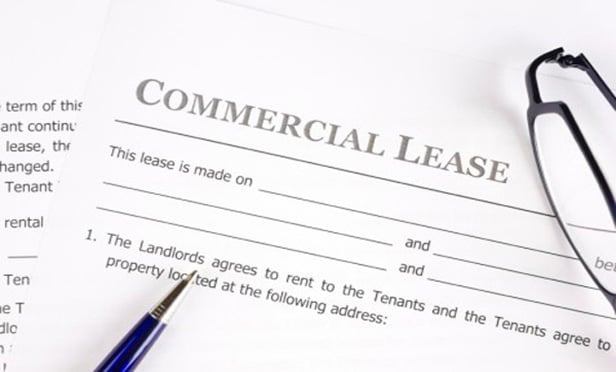Features

Wells Fargo, Ending Its Appeal, Settles Whistleblower's $577K Retaliation Case
Wells Fargo & Co. has reached a settlement with a former branch manager who claimed she was fired for blowing the whistle on employees who had been opening accounts without permission, the sales-pressure conduct at issue in a scandal that erupted in 2016.
Features

<i>e-Discovery:</i> Four Cases Highlighting e-Discovery Trends in the Second Half of 2017
In the second half of 2017, case law served to clarify what does and does not constitute reasonable policies and procedures for preserving information subject to discovery — as well as the risks you run if you fail to follow through on those policies.
Features

Online Marketing Practices Continue to Pose Regulatory Threats for the Financial Services Industry
Last year, the FTC released a staff report on Cross-Device Tracking, which added to the FTC's efforts to regulate emerging issues in the ever-evolving area of online behavioral advertising. The advertising in question involves the collection of data from a particular computer or device regarding a user's Internet-viewing behavior over time and across non-affiliate websites. Cross-device tracking is the logical next step for this technology.
Features

Serving Two Masters: When 'Bankruptcy Remote' Meets Public Policy
<i><b>How Lenders to BREs Can Reduce the Risk of Debtor Bankruptcy Without Compromising Public Policies</b></i><p>Structured financing transactions, including those pertaining to commercial real estate, make extensive use of entities formed for the specific purpose of reducing the likelihood that assets will be involved in a potential bankruptcy proceeding. Known as “bankruptcy-remote entities,” or “BREs,” these entities are subject to structures and covenants in financing documents and their own formation documents, which are designed to reduce the likelihood that the BRE will file for bankruptcy protection.
Features

<i>Leadership:</i> No Immunity: Sexual Harassment & the Legal Industry
For members of a conservative industry that — literally — wrote the rulebook on sexual harassment, law firms need to be ready for a day of reckoning that seems inescapable (and may have already happened by the time this article is published).
Columns & Departments

Bit Parts
“Dead Man Statute” No Bar to Testimony About Alleged Oral Contract for Share of Royalties from Ben E. King Songs<br>Eleventh Circuit Sees No Personal Jurisdiction in Malpractice Lawsuit Against Law Firm that Handled Concert Industry Litigation<br>Tax Court Finds No Profit Motive in Music Club Operation
Features

Takeaways from the Swift End to <i>Waymo v. Uber</i>
The details might not be quite as dramatic as they were in <i>Waymo v. Uber</i>, but lawyers expect trade secrets to continue to be a fertile source for litigation.
Features

Anti-Forfeiture Statute Saves a Debtor's Exercise of Option to Renew Lease
In a recent decision, Bankruptcy Judge Christopher S. Sontchi addressed the question of whether a Chapter 11 debtor, the tenant under a commercial lease, could exercise an option to renew the lease during the bankruptcy proceedings, even though the debtor was in default under the lease and the lease specified that it could not be renewed if defaults existed at the time the option was exercised.
Columns & Departments

Landlord & Tenant
Section 8 Status Protects Tenant from Eviction<br>Questions of Fact About Acceptance of Surrender
Need Help?
- Prefer an IP authenticated environment? Request a transition or call 800-756-8993.
- Need other assistance? email Customer Service or call 1-877-256-2472.
MOST POPULAR STORIES
- The 'Sophisticated Insured' DefenseA majority of courts consider the <i>contra proferentem</i> doctrine to be a pillar of insurance law. The doctrine requires ambiguous terms in an insurance policy to be construed against the insurer and in favor of coverage for the insured. A prominent rationale behind the doctrine is that insurance policies are usually standard-form contracts drafted entirely by insurers.Read More ›
- A Lawyer's System for Active ReadingActive reading comprises many daily tasks lawyers engage in, including highlighting, annotating, note taking, comparing and searching texts. It demands more than flipping or turning pages.Read More ›
- The Brave New World of Cybersecurity Due Diligence in Mergers and Acquisitions: Pitfalls and OpportunitiesLike poorly-behaved school children, new technologies and intellectual property (IP) are increasingly disrupting the M&A establishment. Cybersecurity has become the latest disruptive newcomer to the M&A party.Read More ›
- Abandoned and Unused Cables: A Hidden Liability Under the 2002 National Electric CodeIn an effort to minimize the release of toxic gasses from cables in the event of fire, the 2002 version of the National Electric Code ("NEC"), promulgated by the National Fire Protection Association, sets forth new guidelines requiring that abandoned cables must be removed from buildings unless they are located in metal raceways or tagged "For Future Use." While the NEC is not, in itself, binding law, most jurisdictions in the United States adopt the NEC by reference in their state or local building and fire codes. Thus, noncompliance with the recent NEC guidelines will likely mean that a building is in violation of a building or fire code. If so, the building owner may also be in breach of agreements with tenants and lenders and may be jeopardizing its fire insurance coverage. Even in jurisdictions where the 2002 NEC has not been adopted, it may be argued that the guidelines represent the standard of reasonable care and could result in tort liability for the landlord if toxic gasses from abandoned cables are emitted in a fire. With these potential liabilities in mind, this article discusses: 1) how to address the abandoned wires and cables currently located within the risers, ceilings and other areas of properties, and 2) additional considerations in the placement and removal of telecommunications cables going forward.Read More ›
- Guidance on Distributions As 'Disbursements' and U.S. Trustee FeesIn a recent case from the Bankruptcy Court for the District of Delaware, In re Paragon Offshore PLC, the bankruptcy court provided guidance on whether a post-plan effective date litigation trust's distributions constituted disbursements subject to the U.S. Trustee fee "tax."Read More ›
